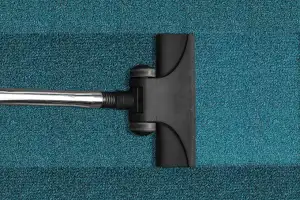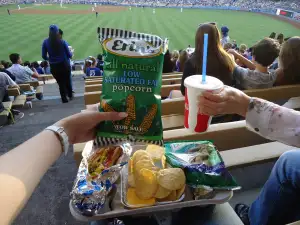Discover the Magic of a Vacuum Sealer for Home: Transform Your Food Storage Game with an Envasadora al Vacío!

- Benefits of using a vacuum sealer at home
- How a vacuum sealer works
- Types of vacuum sealers available for home use
- Factors to consider when choosing a vacuum sealer
- Tips for using a vacuum sealer effectively
- Popular uses of a vacuum sealer in the kitchen
- Maintenance and care of a vacuum sealer
- Cost-effective advantages of owning a vacuum sealer
A vacuum sealer is a versatile kitchen appliance that has revolutionized food storage. It allows you to extend the shelf life of your food by removing air and sealing it in an airtight bag or container. This innovative technology not only helps prevent spoilage and freezer burn but also preserves the flavor, texture, and nutritional value of your food for longer periods. Whether you're a home cook or a professional chef, a vacuum sealer can be a game-changer in your kitchen. Let's explore the many benefits and uses of this magical device!
Benefits of using a vacuum sealer at home
Using a vacuum sealer at home offers numerous benefits. Firstly, it extends the shelf life of food by removing air and sealing it tightly, preventing spoilage and freezer burn. This means you can buy in bulk or cook in larger quantities without worrying about waste. Secondly, a vacuum sealer helps to preserve the flavor, texture, and nutritional value of your food for longer periods. It also prevents the growth of bacteria and mold, ensuring that your food stays fresh and safe to consume. Lastly, using a vacuum sealer reduces the need for additives or preservatives in your food, promoting healthier eating habits.
How a vacuum sealer works
A vacuum sealer works by removing air from the packaging, creating a tight seal around the food. The process involves placing the food in a specially designed bag or container and attaching it to the sealer. The sealer then removes the air from the bag, creating a vacuum environment. This removal of air helps to preserve the freshness and quality of the food for longer periods. The sealed package also prevents bacteria and mold growth, reducing the risk of spoilage. Vacuum sealing works by utilizing either external suction or chamber systems, both of which effectively remove air and create an airtight seal around the food.
Types of vacuum sealers available for home use
When it comes to vacuum sealers for home use, there are two main types to choose from: handheld and countertop models.
Handheld vacuum sealers are compact and portable, making them ideal for occasional use or for those with limited kitchen space. They work by attaching a special nozzle to the bag or container and manually removing the air using a pump or motor.
Countertop vacuum sealers, on the other hand, are larger and more powerful. These machines typically have a built-in chamber where you place the bag or container. The air is then removed automatically, creating an airtight seal.
Both types of vacuum sealers have their advantages and disadvantages. Handheld models are more affordable and versatile, as they can be used with any type of bag or container. Countertop models, on the other hand, offer more power and efficiency, making them ideal for bulk food storage.
Ultimately, the choice between a handheld or countertop vacuum sealer depends on your specific needs and budget. Consider factors such as frequency of use, available storage space, and desired features when making your decision.
Factors to consider when choosing a vacuum sealer
When choosing a vacuum sealer for your home, there are several factors to consider. First, decide on the type of vacuum sealer that best suits your needs. There are two main types: handheld and countertop models. Handheld sealers are portable and convenient for occasional use, while countertop sealers are more powerful and suitable for regular sealing.
Next, consider the sealing mechanism of the vacuum sealer. Some models use heat to create an airtight seal, while others use a clamp or suction mechanism. Heat-sealing models provide a stronger seal but may not be suitable for sealing liquids or moist foods.
Another important factor is the size and capacity of the vacuum sealer. Consider the amount of food you plan to seal at once and choose a model with an appropriate size and bag capacity. Also, check if the sealer can accommodate different sizes of bags or rolls.
Additionally, pay attention to the features and accessories offered by the vacuum sealer. Look for adjustable sealing settings, pulse function for delicate foods, built-in bag cutters, and roll storage compartments. These features can enhance convenience and versatility in your food preservation process.
Lastly, consider the overall durability and reliability of the vacuum sealer. Read reviews from other users to gauge its performance over time. Look for brands with good customer support and warranty options in case any issues arise.
By considering these factors, you can choose a vacuum sealer that meets your specific needs and ensures efficient food preservation in your home kitchen.
Tips for using a vacuum sealer effectively
To use a vacuum sealer effectively, follow these tips:
1. Properly prepare the food: Ensure that the food is clean, dry, and free from any excess moisture or liquids before sealing.
2. Use appropriate bags or rolls: Choose high-quality vacuum sealer bags or rolls that are specifically designed for your machine to ensure a proper seal.
3. Leave enough space: Leave at least 3 inches of space between the food and the top of the bag to allow for proper sealing.
4. Avoid overfilling: Do not overfill the bags as this can prevent a proper seal from forming.
5. Position the open end correctly: Place the open end of the bag into the vacuum sealer's sealing channel, making sure it is positioned properly for a secure seal.
6. Start with a gentle suction: Begin by using a gentle suction setting to avoid crushing delicate foods or causing liquids to be sucked out of the bag.
7. Monitor the sealing process: Keep an eye on the vacuum sealer during operation to ensure that each bag is properly sealed before moving on to the next one.
8. Allow for cooling time: After sealing multiple bags in quick succession, give your vacuum sealer some time to cool down before continuing to use it.
9. Store sealed bags correctly: Store vacuum-sealed bags in a cool, dry place away from direct sunlight or extreme temperatures for optimal preservation.
10. Label and date your packages: To keep track of your stored items, label each package with its contents and date of sealing.
By following these tips, you can maximize the effectiveness of your vacuum sealer and prolong the shelf life of your preserved foods.
Popular uses of a vacuum sealer in the kitchen
Popular uses of a vacuum sealer in the kitchen are diverse and practical. Firstly, it is an excellent tool for preserving fresh produce, such as fruits and vegetables, as it removes air and moisture that can cause spoilage. Vacuum-sealed bags also prevent freezer burn, ensuring that your frozen foods retain their flavor and texture for longer periods. Additionally, vacuum sealing is ideal for marinating meats, as it allows the flavors to penetrate deeply into the food in a fraction of the time compared to traditional methods. It is also great for portioning out bulk purchases of meat or fish into individual servings, which can be stored in the freezer until needed. Lastly, vacuum sealing can extend the shelf life of pantry staples like grains, nuts, and coffee beans by preventing them from being exposed to oxygen. With so many practical applications in the kitchen, a vacuum sealer truly enhances food preservation capabilities at home.
Maintenance and care of a vacuum sealer
Maintenance and care of a vacuum sealer is essential to ensure its longevity and optimal performance. Regular cleaning is important to prevent the buildup of food particles and bacteria. After each use, wipe down the exterior with a damp cloth and mild detergent. Remove any excess moisture from the sealing area to prevent mold growth.
To maintain the vacuum sealer's suction power, it is crucial to regularly clean the sealing strip. Gently remove any residue or debris using a soft brush or cloth. Be careful not to damage the strip in the process.
Additionally, it is recommended to periodically check the vacuum sealer's gaskets for wear and tear. If they are damaged or no longer seal properly, they should be replaced promptly to ensure an airtight seal.
Proper storage of the vacuum sealer when not in use is also important. Store it in a cool, dry place away from direct sunlight and extreme temperatures. This will help prolong its lifespan and prevent any damage.
By following these maintenance tips, you can ensure that your vacuum sealer remains in top condition, allowing you to enjoy its benefits for years to come.
Cost-effective advantages of owning a vacuum sealer
One of the major advantages of owning a vacuum sealer is its cost-effectiveness. By using a vacuum sealer, you can significantly reduce food waste and save money in the long run. Vacuum-sealed food stays fresh for a longer period compared to traditional storage methods, which means less spoilage and fewer trips to the grocery store. Additionally, buying food in bulk and vacuum sealing it allows you to take advantage of discounts and sales, resulting in significant savings over time. With a vacuum sealer, you can also portion out meals or ingredients ahead of time, reducing the need for takeout or pre-packaged convenience foods. Ultimately, investing in a vacuum sealer can help you stretch your budget while ensuring that your food stays fresh and delicious for longer periods.
Conclusion: Enhance your food preservation with a vacuum sealer at home.
Investing in a vacuum sealer for your home is a game-changer when it comes to food storage and preservation. By removing air from the packaging, a vacuum sealer helps to extend the shelf life of your food, keeping it fresh for longer periods. Not only does this save you money by reducing food waste, but it also allows you to enjoy the flavors and nutrients of your favorite ingredients whenever you want.
With various types of vacuum sealers available on the market, there is one that suits every household's needs. Whether you opt for a handheld or countertop model, the benefits remain consistent - increased storage space, protection against freezer burn, and prevention of spoilage caused by bacteria and mold.
When choosing a vacuum sealer, consider factors such as durability, ease of use, and maintenance requirements. Additionally, keep in mind the size and frequency of your food storage needs to determine the appropriate machine for your kitchen.
To make the most out of your vacuum sealer, follow some simple tips like properly sealing bags or containers and storing them in cool and dry places. By doing so, you can preserve not only raw ingredients but also cooked meals or leftovers without compromising their taste or texture.
The uses of a vacuum sealer are endless in the kitchen. From marinating meats quickly to preserving delicate fruits or vegetables without losing their freshness, this versatile appliance will revolutionize how you store and prepare food.
To ensure the longevity of your vacuum sealer, regular maintenance is essential. Clean it after each use according to the manufacturer's instructions and replace any worn-out parts when necessary. This will guarantee its optimal performance for years to come.
While purchasing a vacuum sealer may seem like an investment upfront, its cost-effective advantages cannot be ignored. By reducing food waste and allowing bulk purchases without spoilage concerns, this appliance pays for itself over time.
In conclusion, a vacuum sealer is a must-have tool for any food enthusiast looking to enhance their food preservation game at home. From saving money to enjoying fresh flavors year-round, this magical device will transform the way you store and enjoy your favorite ingredients. So why wait? Get yourself an Envasadora al Vacío today and unlock a world of culinary possibilities!
Published: 12. 02. 2024
Category: Home



